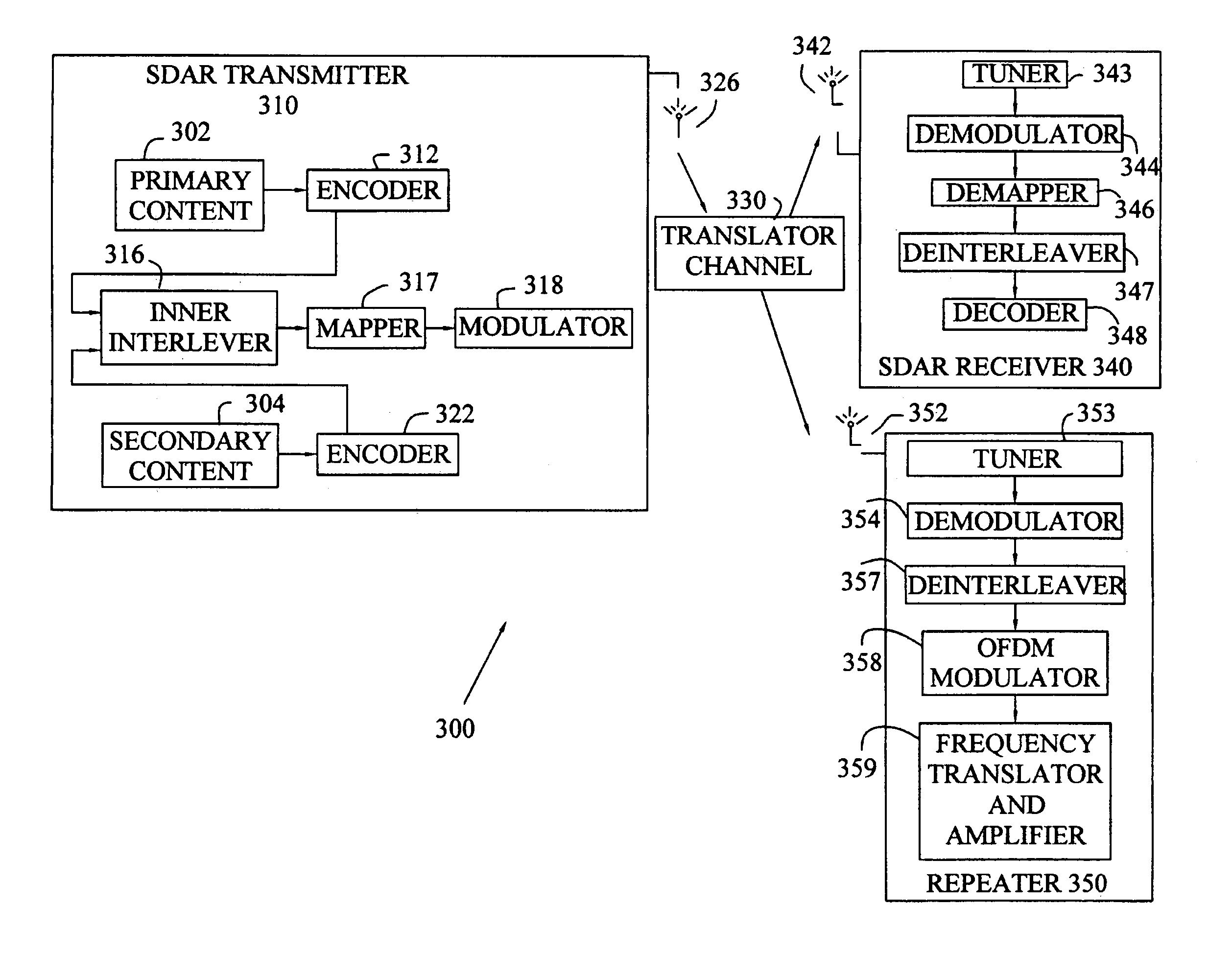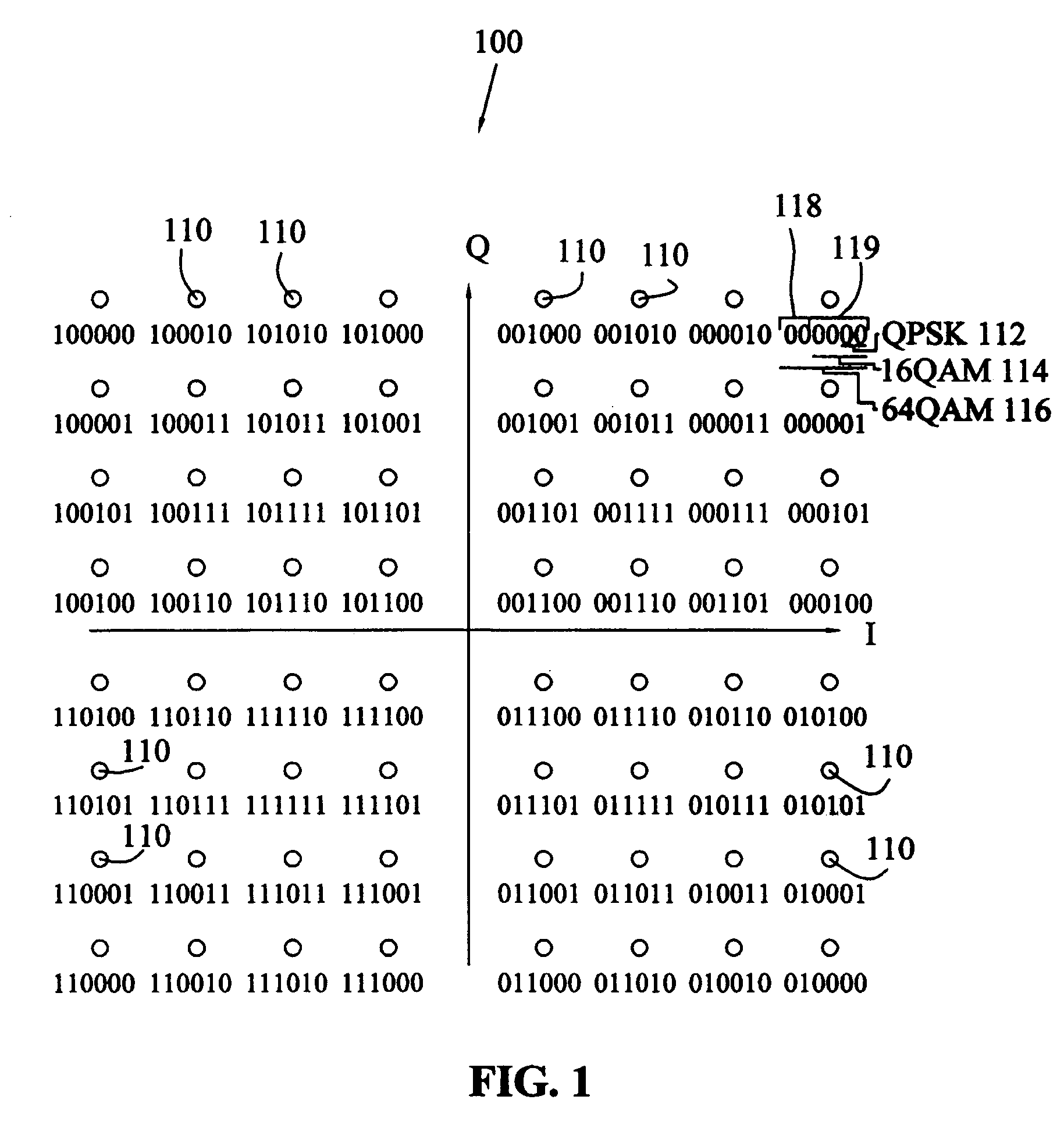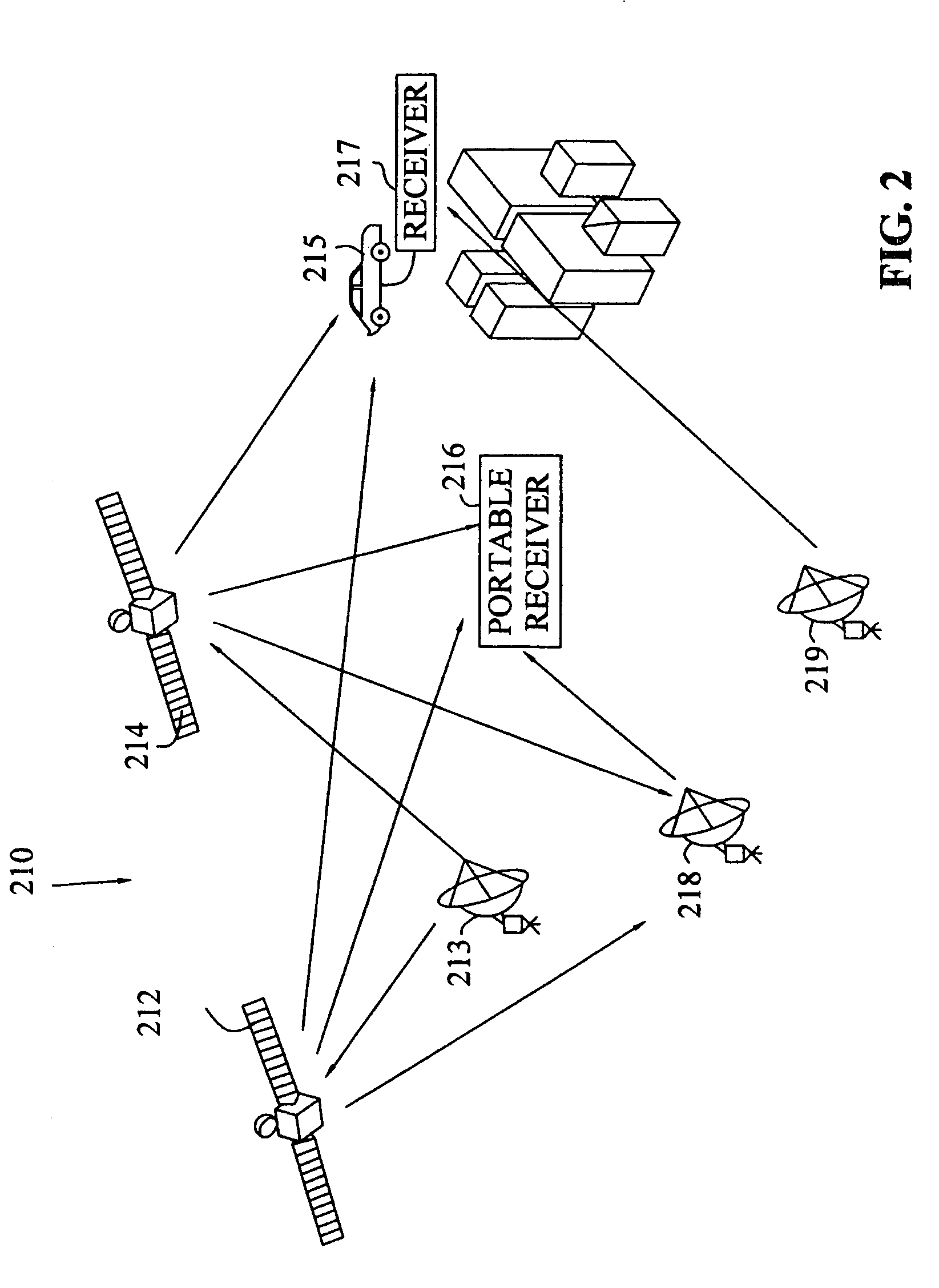Method to minimize compatibility error in hierarchical modulation
a hierarchical modulation and compatibility error technology, applied in the field of digital data transmission, can solve the problems that the hierarchical modulation scheme has not been envisioned for use in the sdar system, and achieve the effects of increasing the amount of digital data, increasing the amount of data, and enhancing the performance of the receiver
- Summary
- Abstract
- Description
- Claims
- Application Information
AI Technical Summary
Benefits of technology
Problems solved by technology
Method used
Image
Examples
Embodiment Construction
[0021]The embodiments disclosed below are not intended to be exhaustive or limit the invention to the precise forms disclosed in the following detailed description. Rather, the embodiments are chosen and described so that others skilled in the art may utilize their teachings.
[0022]For the purposes of the present invention, certain terms shall be interpreted in accordance with the following definitions.
[0023]Baseband: A signal whose frequency content is in the vicinity of direct current (DC).
[0024]Carrier: A single frequency electromagnetic wave the modulations of which are used as communications signals.
[0025]Channel: A propagation medium for communication such as a path along which information in the form of an electrical signal passes (e.g., wire, air, water).
[0026]Data rate: The amount of data, or number of symbols, which may be transmitted on a signal per a unit of time.
[0027]Detector: A circuit that is capable of determining the content of a signal.
[0028]Downconvert: To convert...
PUM
 Login to View More
Login to View More Abstract
Description
Claims
Application Information
 Login to View More
Login to View More - R&D
- Intellectual Property
- Life Sciences
- Materials
- Tech Scout
- Unparalleled Data Quality
- Higher Quality Content
- 60% Fewer Hallucinations
Browse by: Latest US Patents, China's latest patents, Technical Efficacy Thesaurus, Application Domain, Technology Topic, Popular Technical Reports.
© 2025 PatSnap. All rights reserved.Legal|Privacy policy|Modern Slavery Act Transparency Statement|Sitemap|About US| Contact US: help@patsnap.com



